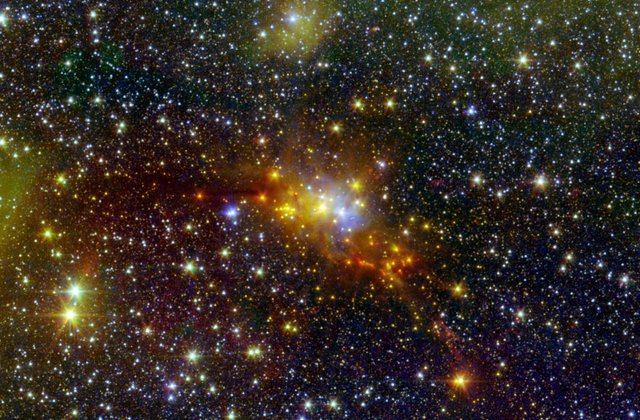Using certain tools we can peel back the layers of dust clouds, seeing what is beneath.

This picture combines data from NASA’s Spitzer Space Telescope and the Two Micron All Sky Survey (2MASS). This picture is very detailed, containing 82 separate pictures taken over a 16.2 hour period. Wavelengths of 3.5 microns are shown in green, 4.6 are red, and the 2 micron ones are blue.[1]
Stars are formed in dust clouds, like this one. Eventually once a cloud gets cool enough gravity is able to take hold. The dust cloud then fractures into smaller clumps of dust, of about 10^4 solar masses. These then fracture further into ~50 solar mass clumps. These clumps then form stars, which heat up the gas. This then pushes the gas away and limits the star’s size. Eventually the entire gas cloud is blown away, leaving a cluster of stars. [2]
That's amazing! Thank you for sharing :)
Downvoting a post can decrease pending rewards and make it less visible. Common reasons:
Submit
That picture is really great !! I am following you
Downvoting a post can decrease pending rewards and make it less visible. Common reasons:
Submit
Very good post friends. Displays incredible photos. thanks for sharing
Downvoting a post can decrease pending rewards and make it less visible. Common reasons:
Submit
This post received a 4.4% upvote from @randowhale thanks to @space-pictures! For more information, click here!
Downvoting a post can decrease pending rewards and make it less visible. Common reasons:
Submit